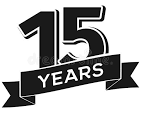Rituparna Mitra
Volume-XI, Issue-I, October 2022
Volume-XI, Issue-I, October 2022 | ||
Published Online: 31.10.2022 | Page No: 166-174 | |||
Rituparna Mitra, M.A in English, From Cotton University, Fatashil G.S Colony, Guwahati, Assam, India | |
Art-similar to human beings- has gone through several stages of evolution. The oldest form known to mankind is that of an oral tradition involving a story-teller (usually an aged person) narrating tales of adventure, romance or great morality to a group of people seeking a little respite after a day’s worth of toiling. Slowly with the passage of time, a desire to preserve those tales and myths led to the birth of a written form of literature. The study of such myths is relevant for many reasons as pointed out by many eminent researchers and scholars. From understanding the psychology of man to trace the evolution of society over the countless many decades, myths shape our knowledge in multiple ways. Myths have a religious purpose to serve as well. Enriched with wisdom, such tales are handed down from one generation to another to be treated life-long as a moral compass. To navigate one’s way in a world that offers too many options (both good and bad), one is always encouraged by their elders to fall back on the stories of ideal men/women such as Rama/Yudhishtir, Sita/ Savitri etc. Another purpose that myths serve is determining the extent to which we have progressed, collectively, as a nation. While talking about progress, what is meant here are not the advancements made in the fields of Science and Technology, which have no doubt made the human life much easier and comfortable? By progression, what are meant here are to what extent our thoughts, our perceptions have evolved over the years. One way to test an evolution of such psychological nature could very well be a close observation of the treatment meted out to specific classes of people in the society-such as women. For, Indian epics (epics and myths are oft used interchangeably) have constantly been called out for being written with a misogynist mindset in the current times. In this paper, I shall be probing a curious kind of enquiry into the changes (if any) brought about in the living conditions of a woman in terms of the expectations she is to meet as well a kind of attitude she gets subjected to. In order to do this, a comparative analysis would be drawn between the ancient era and the modern age by juxtaposing immortal incidents and sequences-starring women primarily-from the famous Hindu epics, on the one hand, and popular Hindi movies(as the modern era shows a greater affinity towards the audio-visual form of art) on the other. | |
Keywords: Art, cinema, misogynist, myth, story-teller, etc |



